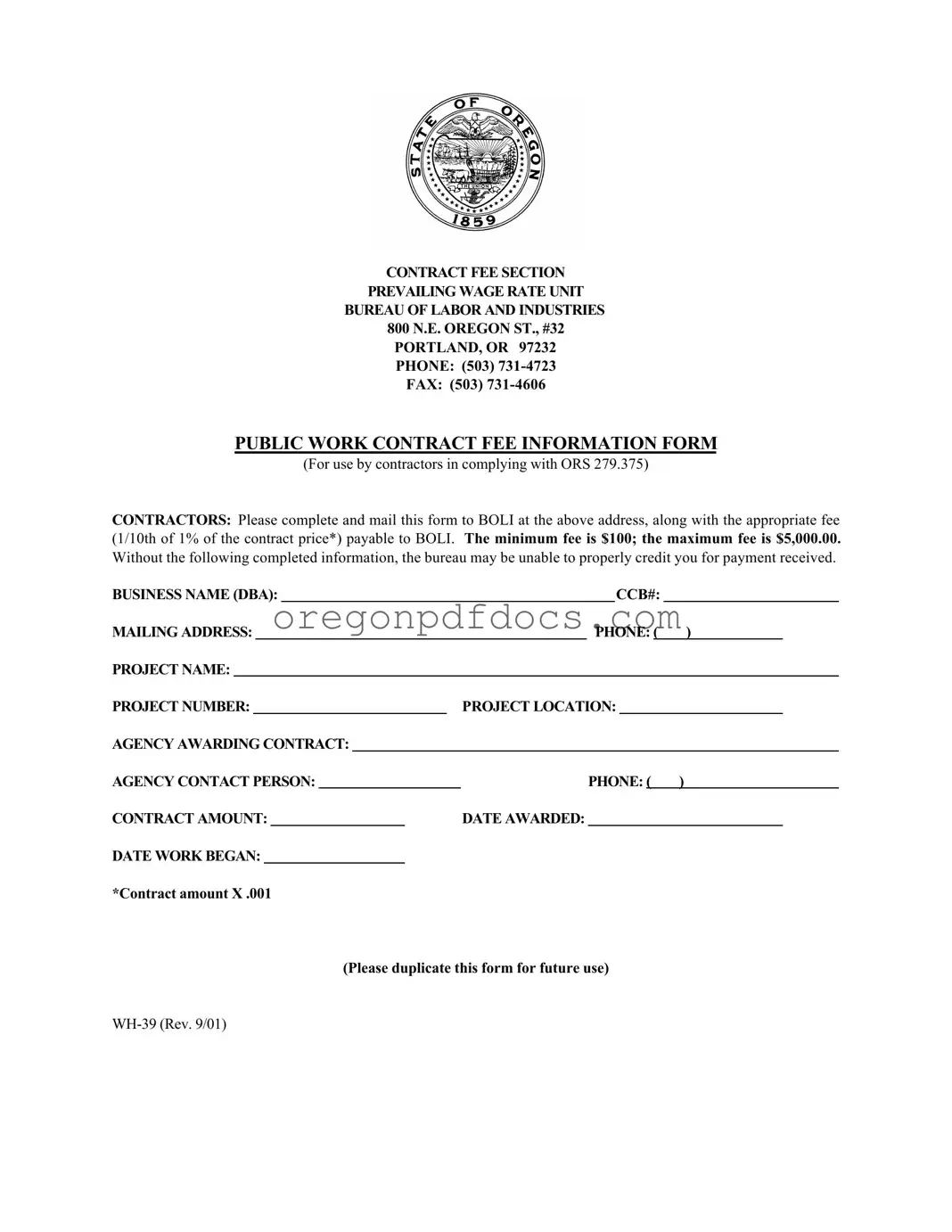The Oregon WH 39 form plays a critical role in the compliance process for contractors engaged in public works projects within the state. This form serves as a Public Work Contract Fee Information Form, which contractors must fill out and submit to the Bureau of Labor and Industries (BOLI). It is essential for ensuring that contractors adhere to the prevailing wage laws outlined in Oregon Revised Statutes (ORS) 279.375. When completing the form, contractors must provide key details such as their business name, contractor's license number, project name, and project location. Additionally, they are required to indicate the contract amount, the date awarded, and when the work is set to begin. A fee, calculated at one-tenth of one percent of the contract price, must accompany the submission, with a minimum fee of $100 and a maximum of $5,000. Properly filling out this form is vital; without complete information, BOLI may struggle to credit payments accurately. This straightforward process not only facilitates compliance but also helps maintain transparency in public contracting. Understanding the nuances of the WH 39 form is essential for contractors aiming to navigate the complexities of public works projects in Oregon.

